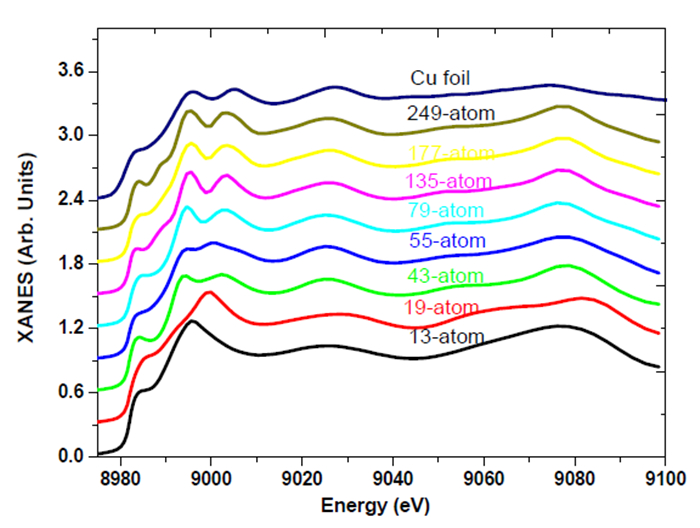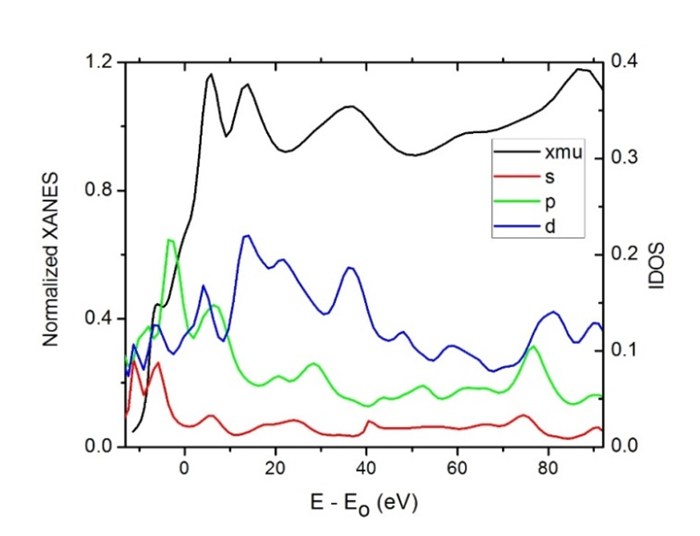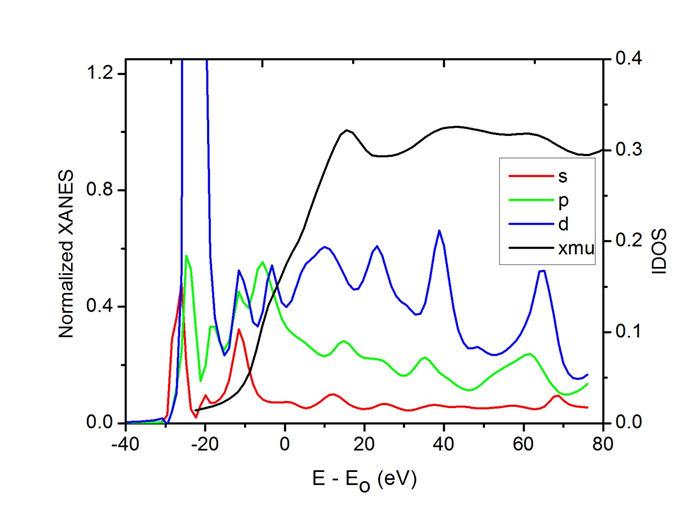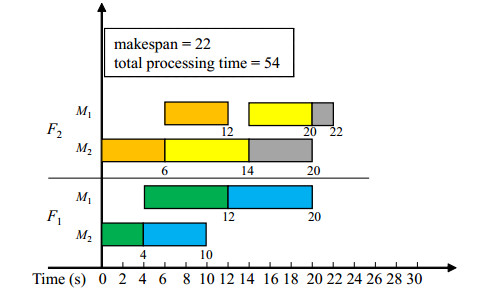|
[1]
|
F. Pezzella, G. Morganti, G. Ciaschetti, A genetic algorithm for the flexible job-shop scheduling problem, Comput. Oper. Res., 35 (2008), 3202–3212. https://doi.org/10.1016/j.cor.2007.02.014 doi: 10.1016/j.cor.2007.02.014

|
|
[2]
|
Z. Shao, D. Pi, W. Shao, Hybrid enhanced discrete fruit fly optimization algorithm for scheduling blocking flow-shop in distributed environment, Expert Syst. Appl., 145 (2020), 113147. https://doi.org/10.1016/j.eswa.2019.113147 doi: 10.1016/j.eswa.2019.113147

|
|
[3]
|
J. Behnamian, S. Fatemi Ghomi, A survey of multi-factory scheduling, J. Intell. Manuf., 27 (2016), 231–249. https://doi.org/10.1007/s10845-014-0890-y doi: 10.1007/s10845-014-0890-y

|
|
[4]
|
M. Yazdani, S. Gohari, B. Naderi, Multi-factory parallel machine problems: Improved mathematical models and artificial bee colony algorithm, Comput. Ind. Eng., 81 (2015), 36–45. https://doi.org/10.1016/j.cie.2014.12.023 doi: 10.1016/j.cie.2014.12.023

|
|
[5]
|
C. Lu, Y. Huang, L. Meng, L. Gao, B. Zhang, J. Zhou, A pareto-based collaborative multi-objective optimization algorithm for energy-efficient scheduling of distributed permutation flow-shop with limited buffers, Rob. Comput. Integr. Manuf., 74 (2022), 102277. https://doi.org/10.1016/j.rcim.2021.102277 doi: 10.1016/j.rcim.2021.102277

|
|
[6]
|
T. Meng, Q. K. Pan, L. Wang, A distributed permutation flowshop scheduling problem with the customer order constraint, Knowl.-Based Syst., 184 (2019), 104894. https://doi.org/10.1016/j.knosys.2019.104894 doi: 10.1016/j.knosys.2019.104894

|
|
[7]
|
S. Hatami, R. Ruiz, C. Andres-Romano, The distributed assembly permutation flowshop scheduling problem, Int. J. Prod. Res., 51 (2013), 5292–5308. https://doi.org/10.1080/00207543.2013.807955 doi: 10.1080/00207543.2013.807955

|
|
[8]
|
F. Xiong, M. Chu, Z. Li, Y. Du, L. Wang, Just-in-time scheduling for a distributed concrete precast flow shop system, Comput. Oper. Res., 129 (2021), 105204. https://doi.org/10.1016/j.cor.2020.105204 doi: 10.1016/j.cor.2020.105204

|
|
[9]
|
M. Gen, R. Cheng, L. Lin, Network models and optimization: Multiobjective genetic algorithm approach, Springer Science & Business Media, 2008.
|
|
[10]
|
B. Jiao, S. Yan, A niche sharing scheme-based co-evolutionary particle swarm optimization algorithm for flow shop scheduling problem, Syst. Cybernet. Inf., 15 (2017), 46–54.
|
|
[11]
|
X. Yu, M. Gen, Introduction to Evolutionary Algorithms, Springer Science & Business Media, 2010.
|
|
[12]
|
J. Gao, R. Chen, W. Deng, An efficient tabu search algorithm for the distributed permutation flowshop scheduling problem, Int. J. Prod. Res., 51 (2013), 641–651. https://doi.org/10.1080/00207543.2011.644819 doi: 10.1080/00207543.2011.644819

|
|
[13]
|
S. y. Wang, L. Wang, M. Liu, Y. Xu, An effective estimation of distribution algorithm for solving the distributed permutation flow-shop scheduling problem, Int. J. Prod. Econ., 145 (2013), 387–396. https://doi.org/10.1016/j.ijpe.2013.05.004 doi: 10.1016/j.ijpe.2013.05.004

|
|
[14]
|
Y. Xu, L. Wang, S. Wang, M. Liu, An effective hybrid immune algorithm for solving the distributed permutation flow-shop scheduling problem, Eng. Optim., 46 (2014), 1269–1283. https://doi.org/10.1080/0305215X.2013.827673 doi: 10.1080/0305215X.2013.827673

|
|
[15]
|
B. Naderi, R. Ruiz, A scatter search algorithm for the distributed permutation flowshop scheduling problem, Eur. J. Oper. Res., 239 (2014), 323–334. https://doi.org/10.1016/j.ejor.2014.05.024 doi: 10.1016/j.ejor.2014.05.024

|
|
[16]
|
H. Bargaoui, O. B. Driss, K. Ghédira, A novel chemical reaction optimization for the distributed permutation flowshop scheduling problem with makespan criterion, Comput. Ind. Eng., 111 (2017), 239–250. https://doi.org/10.1016/j.cie.2017.07.020 doi: 10.1016/j.cie.2017.07.020

|
|
[17]
|
R. Ruiz, Q. K. Pan, B. Naderi, Iterated greedy methods for the distributed permutation flowshop scheduling problem, Omega, 83 (2019), 213–222. https://doi.org/10.1016/j.omega.2018.03.004 doi: 10.1016/j.omega.2018.03.004

|
|
[18]
|
A. Kaveh, T. Bakhshpoori, Artificial bee colony algorithm, in Metaheuristics: Outlines, MATLAB Codes and Examples, Springer, 2019, 19–30. https://doi.org/10.1007/978-3-030-04067-3_3
|
|
[19]
|
F. Zhao, H. Liu, Y. Zhang, W. Ma, C. Zhang, A discrete water wave optimization algorithm for no-wait flow shop scheduling problem, Expert Syst. Appl., 91 (2018), 347–363. https://doi.org/10.1016/j.eswa.2017.09.028 doi: 10.1016/j.eswa.2017.09.028

|
|
[20]
|
J. f. Chen, L. Wang, Z. p. Peng, A collaborative optimization algorithm for energy-efficient multi-objective distributed no-idle flow-shop scheduling, Swarm Evol. Comput., 50 (2019), 100557. https://doi.org/10.1016/j.swevo.2019.100557 doi: 10.1016/j.swevo.2019.100557

|
|
[21]
|
V. Fernandez-Viagas, P. Perez-Gonzalez, J. M. Framinan, The distributed permutation flow shop to minimise the total flowtime, Comput. Ind. Eng., 118 (2018), 464–477. https://doi.org/10.1016/j.cie.2018.03.014 doi: 10.1016/j.cie.2018.03.014

|
|
[22]
|
W. Shao, Z. Shao, D. Pi, Multi-objective evolutionary algorithm based on multiple neighborhoods local search for multi-objective distributed hybrid flow shop scheduling problem, Expert Syst. Appl., 183 (2021), 115453. https://doi.org/10.1016/j.eswa.2021.115453 doi: 10.1016/j.eswa.2021.115453

|
|
[23]
|
Y. Del Valle, G. K. Venayagamoorthy, S. Mohagheghi, J. C. Hernandez, R. G. Harley, Particle swarm optimization: basic concepts, variants and applications in power systems, IEEE Trans. Evol. Comput., 12 (2008), 171–195.
|
|
[24]
|
J. Kennedy, R. C. Eberhart, A discrete binary version of the particle swarm algorithm, in 1997 IEEE International Conference on Systems, Man, and Cybernetics. Computational Cybernetics and Simulation, 5 (1997), 4104–4108. https://doi.org/10.1109/ICSMC.1997.637339
|
|
[25]
|
T. Jamrus, C. F. Chien, M. Gen, K. Sethanan, Hybrid particle swarm optimization combined with genetic operators for flexible job-shop scheduling under uncertain processing time for semiconductor manufacturing, IEEE Trans. Semicond. Manuf., 31 (2017), 32–41. https://doi.org/10.1109/TSM.2017.2758380 doi: 10.1109/TSM.2017.2758380

|
|
[26]
|
T. Jamrus, C. F. Chien, M. Gen, K. Sethanan, Multistage production distribution under uncertain demands with integrated discrete particle swarm optimization and extended priority-based hybrid genetic algorithm, Fuzzy Optim. Decis. Making, 14 (2015), 265–287. https://doi.org/10.1007/s10700-014-9200-6 doi: 10.1007/s10700-014-9200-6

|
|
[27]
|
C. Moon*, J. Kim, M. Gen, Advanced planning and scheduling based on precedence and resource constraints for e-plant chains, Int. J. Prod. Res., 42 (2004), 2941–2955. https://doi.org/10.1080/00207540410001691956 doi: 10.1080/00207540410001691956

|
|
[28]
|
A. Okamoto, M. Gen, M. Sugawara, Integrated data structure and scheduling approach for manufacturing and transportation using hybrid genetic algorithm, J. Intell. Manuf., 17 (2006), 411–421. https://doi.org/10.1007/s10845-005-0014-9 doi: 10.1007/s10845-005-0014-9

|
|
[29]
|
R. Storn, K. Price, Differential evolution–a simple and efficient heuristic for global optimization over continuous spaces, J. Global Optim., 11 (1997), 341–359.
|
|
[30]
|
E. Jiang, L. Wang, J. Wang, Decomposition-based multi-objective optimization for energy-aware distributed hybrid flow shop scheduling with multiprocessor tasks, Tsinghua Sci. Technol., 26 (2021), 646–663. https://doi.org/10.26599/TST.2021.9010007 doi: 10.26599/TST.2021.9010007

|
|
[31]
|
C. A. C. Coello, G. T. Pulido, M. S. Lechuga, Handling multiple objectives with particle swarm optimization, IEEE Trans. Evol. Comput., 8 (2004), 256–279. https://doi.org/10.1109/TEVC.2004.826067 doi: 10.1109/TEVC.2004.826067

|
|
[32]
|
B. Naderi, R. Ruiz, The distributed permutation flowshop scheduling problem, Comput. Oper. Res., 37 (2010), 754–768. https://doi.org/10.1016/j.cor.2009.06.019 doi: 10.1016/j.cor.2009.06.019

|
|
[33]
|
J. J. Wang, L. Wang, A knowledge-based cooperative algorithm for energy-efficient scheduling of distributed flow-shop, IEEE Trans. Syst. Man Cybern.: Syst., 50 (2018), 1805–1819. https://doi.org/10.1109/TSMC.2017.2788879 doi: 10.1109/TSMC.2017.2788879

|
|
[34]
|
A. P. Rifai, H. T. Nguyen, S. Z. M. Dawal, Multi-objective adaptive large neighborhood search for distributed reentrant permutation flow shop scheduling, Appl. Soft Comput., 40 (2016), 42–57. https://doi.org/10.1016/j.asoc.2015.11.034 doi: 10.1016/j.asoc.2015.11.034

|
|
[35]
|
J. Deng, L. Wang, A competitive memetic algorithm for multi-objective distributed permutation flow shop scheduling problem, Swarm Evol. Comput., 32 (2017), 121–131. https://doi.org/10.1016/j.swevo.2016.06.002 doi: 10.1016/j.swevo.2016.06.002

|
|
[36]
|
C. Lu, L. Gao, J. Yi, X. Li, Energy-efficient scheduling of distributed flow shop with heterogeneous factories: A real-world case from automobile industry in china, IEEE Trans. Ind. Inf., 17 (2020), 6687–6696. https://doi.org/10.1109/TII.2020.3043734 doi: 10.1109/TII.2020.3043734

|
|
[37]
|
S. W. Lin, K. C. Ying, Minimizing makespan for solving the distributed no-wait flowshop scheduling problem, Comput. Ind. Eng., 99 (2016), 202–209. https://doi.org/10.1016/j.cie.2016.07.027 doi: 10.1016/j.cie.2016.07.027

|
|
[38]
|
K. C. Ying, S. W. Lin, C. Y. Cheng, C. D. He, Iterated reference greedy algorithm for solving distributed no-idle permutation flowshop scheduling problems, Comput. Ind. Eng., 110 (2017), 413–423. https://doi.org/10.1016/j.cie.2017.06.025 doi: 10.1016/j.cie.2017.06.025

|
|
[39]
|
C. Y. Cheng, K. C. Ying, H. H. Chen, H. S. Lu, Minimising makespan in distributed mixed no-idle flowshops, Int. J. Prod. Res., 57 (2019), 48–60. https://doi.org/10.1080/00207543.2018.1457812 doi: 10.1080/00207543.2018.1457812

|
|
[40]
|
G. Zhang, K. Xing, Differential evolution metaheuristics for distributed limited-buffer flowshop scheduling with makespan criterion, Comput. Oper. Res., 108 (2019), 33–43. https://doi.org/10.1016/j.cor.2019.04.002 doi: 10.1016/j.cor.2019.04.002

|
|
[41]
|
F. Zhao, X. He, L. Wang, A two-stage cooperative evolutionary algorithm with problem-specific knowledge for energy-efficient scheduling of no-wait flow-shop problem, IEEE Trans. Cybern., 51 (2020), 5291–5303. https://doi.org/10.1109/TCYB.2020.3025662 doi: 10.1109/TCYB.2020.3025662

|
|
[42]
|
F. Zhao, L. Zhang, J. Cao, J. Tang, A cooperative water wave optimization algorithm with reinforcement learning for the distributed assembly no-idle flowshop scheduling problem, Comput. Ind. Eng., 153 (2021), 107082. https://doi.org/10.1016/j.cie.2020.107082 doi: 10.1016/j.cie.2020.107082

|
|
[43]
|
F. Zhao, R. Ma, L. Wang, A self-learning discrete jaya algorithm for multiobjective energy-efficient distributed no-idle flow-shop scheduling problem in heterogeneous factory system, IEEE Trans. Cybern., 2021. https://doi.org/10.1109/TCYB.2021.3086181 doi: 10.1109/TCYB.2021.3086181

|
|
[44]
|
H. Jia, J. Y. Fuh, A. Y. Nee, Y. Zhang, Web-based multi-functional scheduling system for a distributed manufacturing environment, Concurrent Eng., 10 (2002), 27–39. https://doi.org/10.1177/1063293X02010001054 doi: 10.1177/1063293X02010001054

|
|
[45]
|
X. Zhang, X. T. Li, M. H. Yin, An enhanced genetic algorithm for the distributed assembly permutation flowshop scheduling problem, Int. J. Bio-Inspired Comput., 15 (2020), 113–124.
|
|
[46]
|
J. J. Wang, L. Wang, An iterated greedy algorithm for distributed hybrid flowshop scheduling problem with total tardiness minimization, in 2019 IEEE 15th International Conference on Automation Science and Engineering (CASE), IEEE, (2019), 350–355. https://doi.org/10.1109/COASE.2019.8842885
|
|
[47]
|
M. F. Tasgetiren, Y. C. Liang, M. Sevkli, G. Gencyilmaz, A particle swarm optimization algorithm for makespan and total flowtime minimization in the permutation flowshop sequencing problem, Eur. J. Oper. Res., 177 (2007), 1930–1947. https://doi.org/10.1016/j.ejor.2005.12.024 doi: 10.1016/j.ejor.2005.12.024

|
|
[48]
|
Q. K. Pan, M. F. Tasgetiren, Y. C. Liang, A discrete particle swarm optimization algorithm for the no-wait flowshop scheduling problem, Comput. Oper. Res., 35 (2008), 2807–2839. https://doi.org/10.1016/j.cor.2006.12.030 doi: 10.1016/j.cor.2006.12.030

|
|
[49]
|
A. Rahimi-Vahed, S. Mirghorbani, A multi-objective particle swarm for a flow shop scheduling problem, J. Comb. Optim., 13 (2007), 79–102. https://doi.org/10.1007/s10878-006-9015-7 doi: 10.1007/s10878-006-9015-7

|
|
[50]
|
Y. X. Su, R. Chi, Multi-objective particle swarm-differential evolution algorithm, Neural Comput. Appl., 28 (2017), 407–418. https://doi.org/10.1007/s00521-015-2073-y doi: 10.1007/s00521-015-2073-y

|
|
[51]
|
Z. Cui, J. Zhang, D. Wu, X. Cai, H. Wang, W. Zhang, et al., Hybrid many-objective particle swarm optimization algorithm for green coal production problem, Inf. Sci., 518 (2020), 256–271. https://doi.org/10.1016/j.ins.2020.01.018 doi: 10.1016/j.ins.2020.01.018

|
|
[52]
|
W. Zhang, W. Hou, C. Li, W. Yang, M. Gen, Multidirection update-based multiobjective particle swarm optimization for mixed no-idle flow-shop scheduling problem, Complex Syst. Modell. Simul., 1 (2021), 176–197. https://doi.org/10.23919/CSMS.2021.0017 doi: 10.23919/CSMS.2021.0017

|
|
[53]
|
J. Q. Li, M. X. Song, L. Wang, P. Y. Duan, Y. Y. Han, H. Y. Sang, et al., Hybrid artificial bee colony algorithm for a parallel batching distributed flow-shop problem with deteriorating jobs, IEEE Trans. Cybern., 50 (2019), 2425–2439. https://doi.org/10.1109/TCYB.2019.2943606 doi: 10.1109/TCYB.2019.2943606

|
|
[54]
|
Q. K. Pan, L. Gao, L. Wang, J. Liang, X. Y. Li, Effective heuristics and metaheuristics to minimize total flowtime for the distributed permutation flowshop problem, Expert Syst. Appl., 124 (2019), 309–324. https://doi.org/10.1016/j.eswa.2019.01.062 doi: 10.1016/j.eswa.2019.01.062

|
|
[55]
|
J. P. Huang, Q. K. Pan, Z. H. Miao, L. Gao, Effective constructive heuristics and discrete bee colony optimization for distributed flowshop with setup times, Eng. Appl. Artif. Intell., 97 (2021), 104016. https://doi.org/10.1016/j.engappai.2020.104016 doi: 10.1016/j.engappai.2020.104016

|
|
[56]
|
M. E. Baysal, A. Sarucan, K. Büyüközkan, O. Engin, Artificial bee colony algorithm for solving multi-objective distributed fuzzy permutation flow shop problem, J. Intell. Fuzzy Syst., (2022), 1–11. https://doi.org/10.3233/JIFS-219202 doi: 10.3233/JIFS-219202

|
|
[57]
|
W. L. Liu, Y. J. Gong, W. N. Chen, Z. Liu, H. Wang, J. Zhang, Coordinated charging scheduling of electric vehicles: A mixed-variable differential evolution approach, IEEE Trans. Intell. Transp. Syst., 21 (2019), 5094–5109. https://doi.org/10.1109/TITS.2019.2948596 doi: 10.1109/TITS.2019.2948596

|
|
[58]
|
S. Zhou, L. Xing, X. Zheng, N. Du, L. Wang, Q. Zhang, A self-adaptive differential evolution algorithm for scheduling a single batch-processing machine with arbitrary job sizes and release times, IEEE Trans. Cybern., 51 (2019), 1430–1442. https://doi.org/10.1109/TCYB.2019.2939219 doi: 10.1109/TCYB.2019.2939219

|
|
[59]
|
W. Zhang, Y. Wang, Y. Yang, M. Gen, Hybrid multiobjective evolutionary algorithm based on differential evolution for flow shop scheduling problems, Comput. Ind. Eng., 130 (2019), 661–670. https://doi.org/10.1016/j.cie.2019.03.019 doi: 10.1016/j.cie.2019.03.019

|
|
[60]
|
Y. Y. Han, D. Gong, X. Sun, A discrete artificial bee colony algorithm incorporating differential evolution for the flow-shop scheduling problem with blocking, Eng. Optim., 47 (2015), 927–946. https://doi.org/10.1080/0305215X.2014.928817 doi: 10.1080/0305215X.2014.928817

|
|
[61]
|
W. Zhang, M. Gen, J. Jo, Hybrid sampling strategy-based multiobjective evolutionary algorithm for process planning and scheduling problem, J. Intell. Manuf., 25 (2014), 881–897. https://doi.org/10.1007/s10845-013-0814-2 doi: 10.1007/s10845-013-0814-2

|
|
[62]
|
Y. Li, C. Wang, L. Gao, Y. Song, X. Li, An improved simulated annealing algorithm based on residual network for permutation flow shop scheduling, Complex Intell. Syst., 7 (2021), 1173–1183. https://doi.org/10.1007/s40747-020-00205-9 doi: 10.1007/s40747-020-00205-9

|
|
[63]
|
M. Baioletti, A. Milani, V. Santucci, Algebraic particle swarm optimization for the permutations search space, in 2017 IEEE Congress on Evolutionary Computation (CEC), IEEE, (2017), 1587–1594. https://doi.org/10.1109/CEC.2017.7969492
|
|
[64]
|
E. Taillard, Benchmarks for basic scheduling problems, Eur. J. Oper. Res., 64 (1993), 278–285. https://doi.org/10.1016/0377-2217(93)90182-M doi: 10.1016/0377-2217(93)90182-M

|
|
[65]
|
A. P. Rifai, S. T. W. Mara, A. Sudiarso, Multi-objective distributed reentrant permutation flow shop scheduling with sequence-dependent setup time, Expert Syst. Appl., 183 (2021), 115339. https://doi.org/10.1016/j.eswa.2021.115339 doi: 10.1016/j.eswa.2021.115339

|
|
[66]
|
G. Wang, X. Li, L. Gao, P. Li, An effective multi-objective whale swarm algorithm for energy-efficient scheduling of distributed welding flow shop, Ann. Oper. Res., 310 (2022), 223–255. https://doi.org/10.1007/s10479-021-03952-1 doi: 10.1007/s10479-021-03952-1

|
|
[67]
|
S. Yang, Z. Xu, The distributed assembly permutation flowshop scheduling problem with flexible assembly and batch delivery, Int. J. Prod. Res., 59 (2021), 4053–4071. https://doi.org/10.1080/00207543.2020.1757174 doi: 10.1080/00207543.2020.1757174

|
|
[68]
|
J. Derrac, S. García, D. Molina, F. Herrera, A practical tutorial on the use of nonparametric statistical tests as a methodology for comparing evolutionary and swarm intelligence algorithms, Swarm Evol. Comput., 1 (2011), 3–18.
|
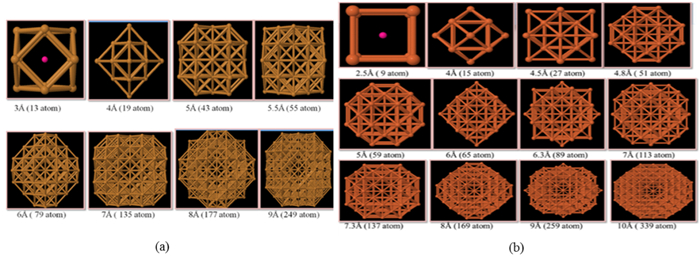









 DownLoad:
DownLoad:
